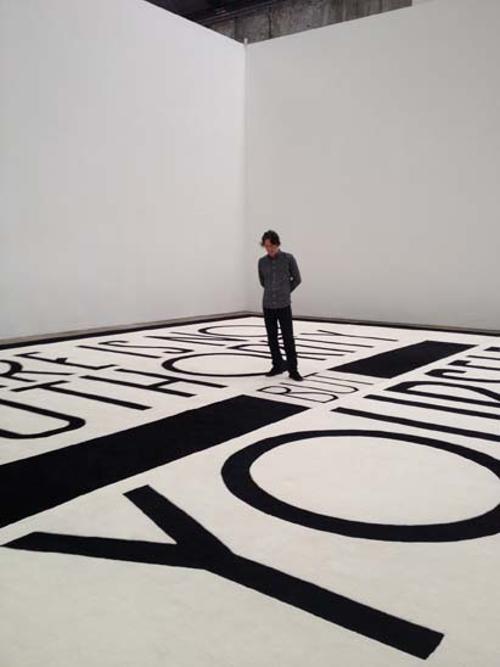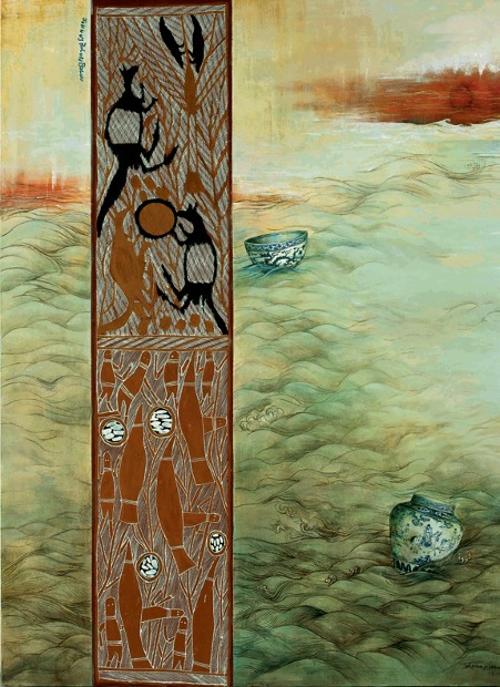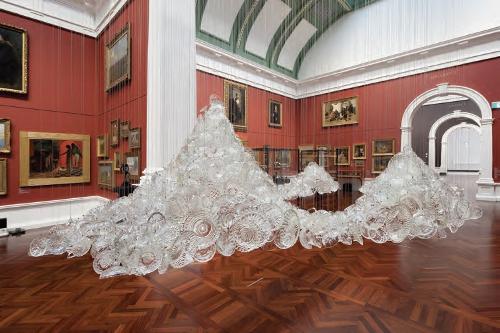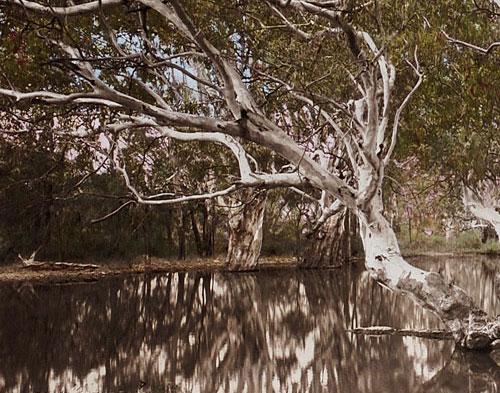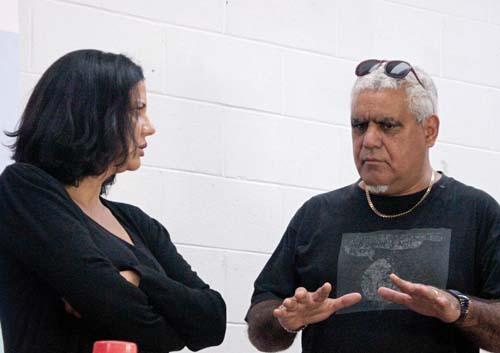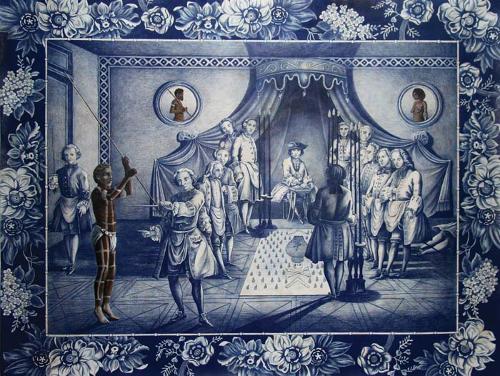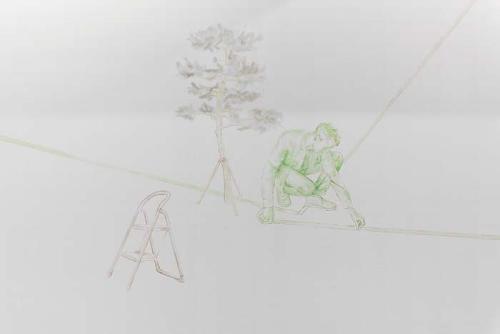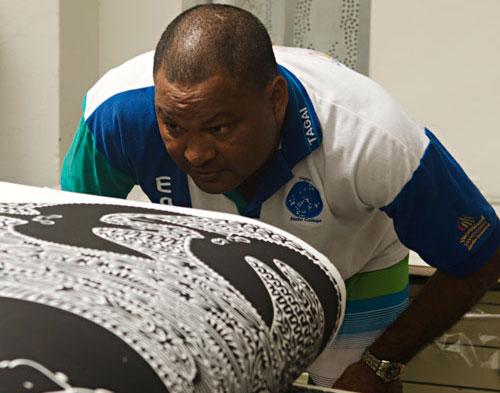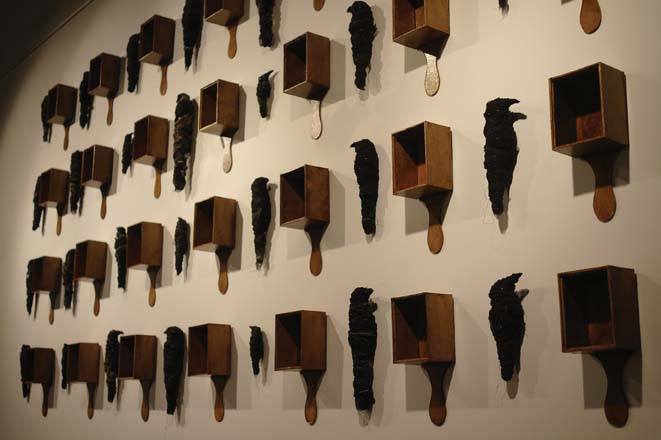
Glen Skien says that he's "stopped collecting", and that he’s more purposefully making the objects that gradually coalesce into his lyrical, haunting new works installed in MYTHO-POETIC. There are still a good many found objects woven into his choices, and his limitless, signature imagery of birds, wings, aircraft, grids, maps, diagrams, fish, horses, celebrities - all somehow manage to cohabit nicely with a soft geometrical abstraction and formal experiments focusing on the spatial and symbolic.
In the making as well as in the selection, a viewer sees and feels Skien’s sense of touch. Whether pulling monoprints for reworking as supports for drawings bound into books, or actually inscribing tiny clouds of white numbers on inky-black pages, his gesture stops just short of the overwrought: it’s not feverish, it’s “pensive” (to use one of Skien’s favourite words). His sensibility is remarkably omnivorous, delicate and obsessive. These are wonderfully conflicting traits that, when combined with the common sense necessary to be a good craftsman and an expert printmaker, maintain a tension between flying away and being grounded.
Narrative in the everyday – as memory, reverie, conversation, history – not in epic, heroic activity, but as evidenced in the daily rounds of human activity – is his main concern. Looking at Object-Poem 3: The Europeans – Saint Stephen’s Day, Brunswick St. 1979, a viewer feels the same surreal frisson imparted by a Magritte. The comparison is inevitable, given the artists’ shared imagery, use of handwritten text, and perspectival punning. In Saint Stephen’s Day, Skien hangs a luggage trolley directly onto the wall, facing out toward the viewer. Piled on the base of the trolley is a lumped mass of embalmed blackbirds, bound down with black twine to a layering of wood and gridded wire fencing on top of the base: here the exquisite is combined with death, along with a sense of purpose in a task to be accomplished, and possibly in this is the artist’s commitment to “carrying on”. But where Magritte’s paintings are static and seem to narcissistically require from the viewer a gaze of awe and veneration in the face of the obscure, Skien’s works remain fluid, conversational, and inviting. One enjoys responding to them and feels relaxed in sharing his search for meaning – along with an egalitarian sense of challenge to add to the equation.
There is a gentle mathematics functioning in Skien’s Object-Poem 4: Mytho-Poetic- 1962 Fokker Friendship Aircraft Wing ...Scale (1:5), which is echoed throughout the work. The physics of hanging this airplane wing is completed by an off-the-cuff addition of a C-clamp for balancing the sculpture’s weight. The wing’s irregular surface panelling does not quite resolve into a grid, and the drainage element placed beneath encases and frames a mapped shoreline. The verso side of Fokker Friendship features another signature treatment: a lovingly tactile layering of repeated applications of fragments of metal and fabric. Even in Resemblance 1-3, a suite of three wing-shaped etchings hung horizontally across the gallery’s west wall, does the adding and subtracting, shifting and planning assemble to reference schematics including maps, architectural drawings, dress patterns and below-deck quarters of slave or convict ships.
Preferring to relinquish closure in his decision-making, Skien says he trusts in an intuitive sense that some groupings, materials and images will eventually disclose their significance, and that process will tell him what to discard. This calls for a kind of passivity in action and observation – a “not getting in the way” of what may be revealed. In this manner, Skien balances an investigation of the immanence or transcendence of a divine presence. His love of materials, of fabrication and finding, and of honouring the everyday place him firmly, here, on the ground.


